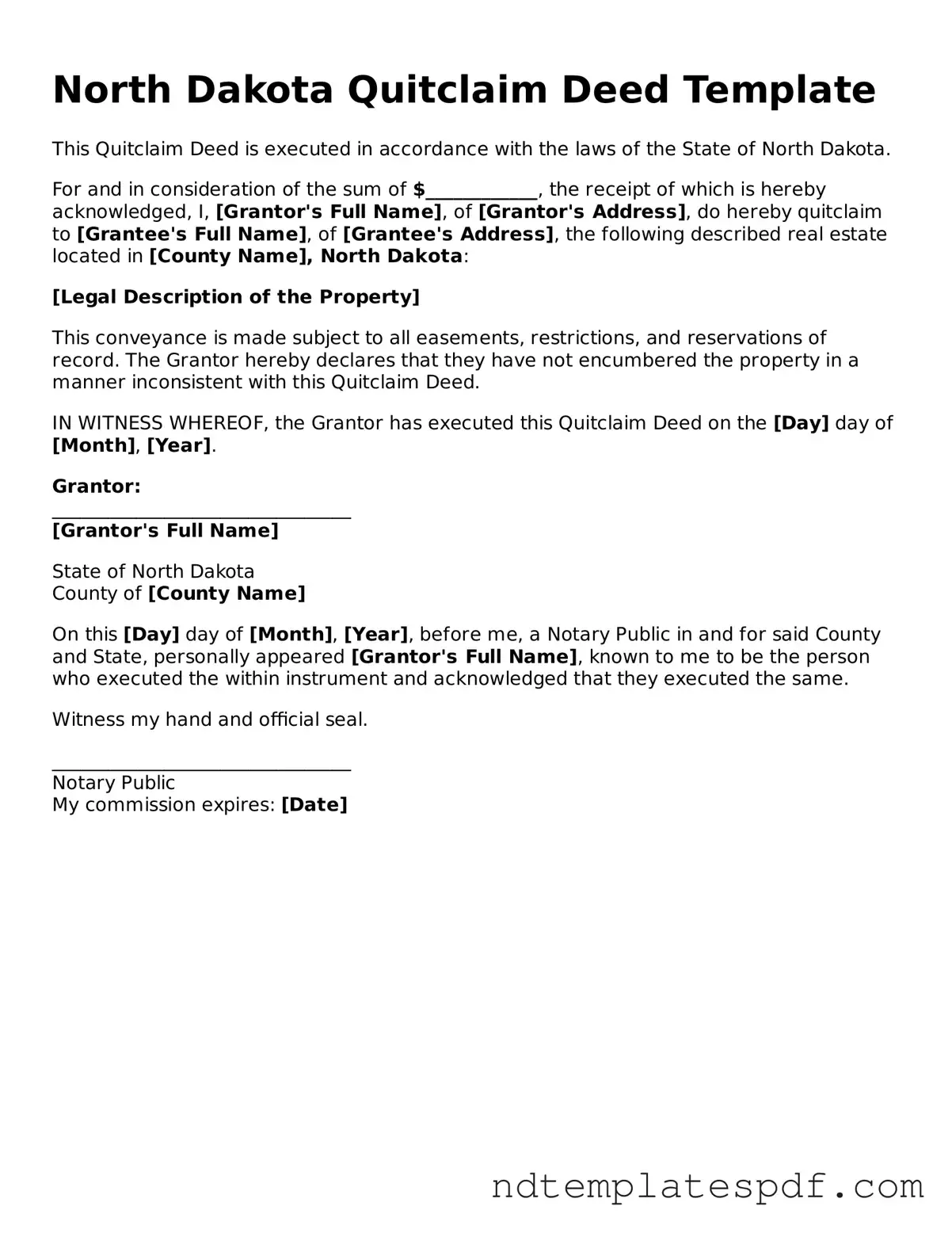Legal North Dakota Quitclaim Deed Document
A Quitclaim Deed is a legal document used to transfer ownership of real estate from one party to another without any guarantees regarding the title's validity. In North Dakota, this form serves as a straightforward method for property owners to convey their interests, whether in full or in part. Understanding the implications of using a Quitclaim Deed is essential for both grantors and grantees in order to ensure a smooth transaction.
Fill Out Document Now
